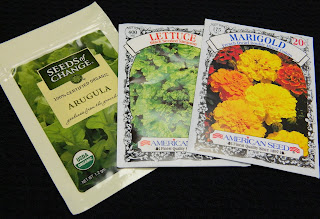I learned how to do a “seedy experiment” at the Bean2Blog last week, so I thought I’d pass it along to those of you who aspire to be gardeners. Two of our speakers that day were students from the University of Arkansas. Kimberly is a Ph.D student in the Plant Pathology department and Faye is earning her Master’s degree in Crop, Soil and Environmental Science. It was quickly evident that these two know beans about soybeans and other plants.
A Seedy Experiment
Faye is shown here on the left and Kimberly is on the right.
One topic that they talked about was seed germination, and how knowledge of this not only helps farmers, but it can also help the home gardener. I enjoy growing lots of flowers, and I even grow some vegetables, fruits, and herbs on a small scale. For the experiment each one of the bloggers attending the Bean2Blog was given a ziplock bag, a heavy piece of paper that was moistened and folded into fourths, and 10 soybean seeds. We put the seeds inside the moistened paper, then placed them inside the ziplock bag with one corner left open. We were asked to bring them home, to put them in a warm place, and to check them after several days to see how many had sprouted. That was on Tuesday, and by Friday this is how mine looked.
If you look closely at my seeds, you can see that all 10 have sprouted for a 100% germination rate! This is exciting to me because from this I learned that you can check the quality of your seeds before you plant them.
I think this is a great way to find out if the seeds you plan to use are “good” seeds or “dud” seeds. Early in the spring this year I planted seeds from packets similar to these in two large patio containers. One container was for lettuce and the other was for spinach. The lettuce came up everywhere the seeds fell, but the spinach was very spaced, skippy and sparse. If I had tested my seeds for germination rate in advance of planting I would have known that I needed to use more spinach seeds than the directions indicated, and I could have avoided such a disappointing crop.
This germination rate test would be a fun way to get your school-age children involved in gardening too. Let them set up the tests and calculate the germination rate for you (even very young children can count sprouted beans), then let them help you plant the seeds.
Kimberly and Faye had several other useful ideas for us, and one was how to make your own skin softening balm. I’ll be sharing their recipe for that in a post soon.
All images and text copyright © 2021 Sugar, Spice and Spilled Milk/Aunt Nubby’s Kitchen.Blogspot.com








Very interesting! I should do this. I lost four seedling tomato and pepper plants after four weeks of growth. I tried everything to no avail. Checking their efficacy is probably really worth my time. 😉
What a great idea! Thanks for sharing it 🙂
I've heard of doing this but haven't actually seen the actual proof. Great idea! I'm glad you shared the photos.
xo
Pat
Great idea…I'm going to do that as I always have old seeds that I want to use up but if you wait until they pop through the ground…who's going to go back and replant…you're already behind. This way you have a "heads up" and can plant accordingly. Thank you!
I like the idea of checking the seeds. You received some very useful ideas there.
This is great to know! I used left over string bean seeds from 2009 this year (don't know why I still had them but I did), only 1/4 came up. I could have saved some time and used the "good" ones and planted the rest of the space with fresher beans:@)
Anita, What great information! I always throw my extra seed out, because I was told that it is no good from year to year! I won't do that anymore! Great post!
It reminds me of grade school…we used to do that…it was so much fun to watch them sprout.